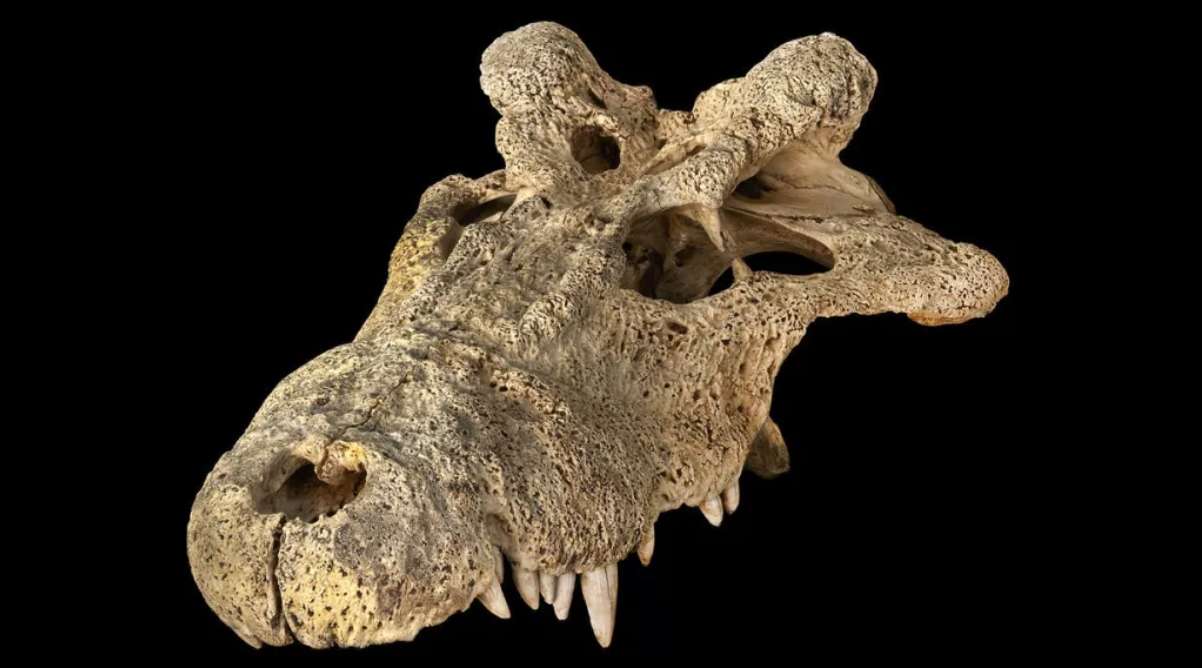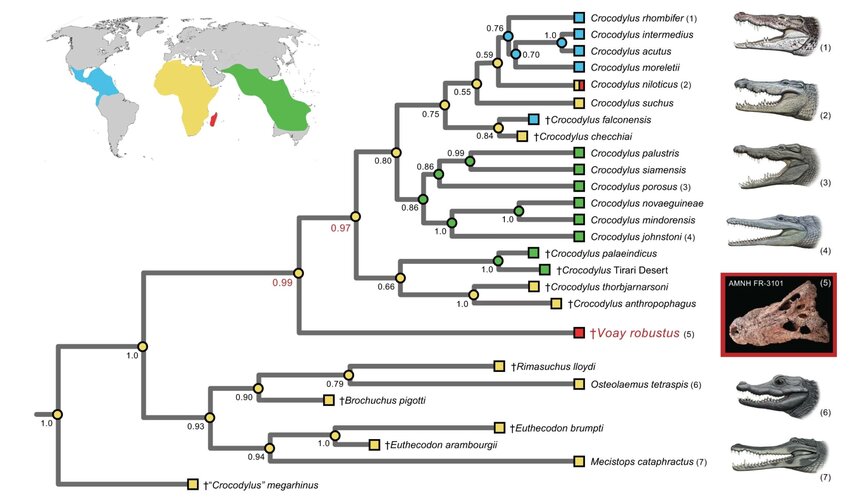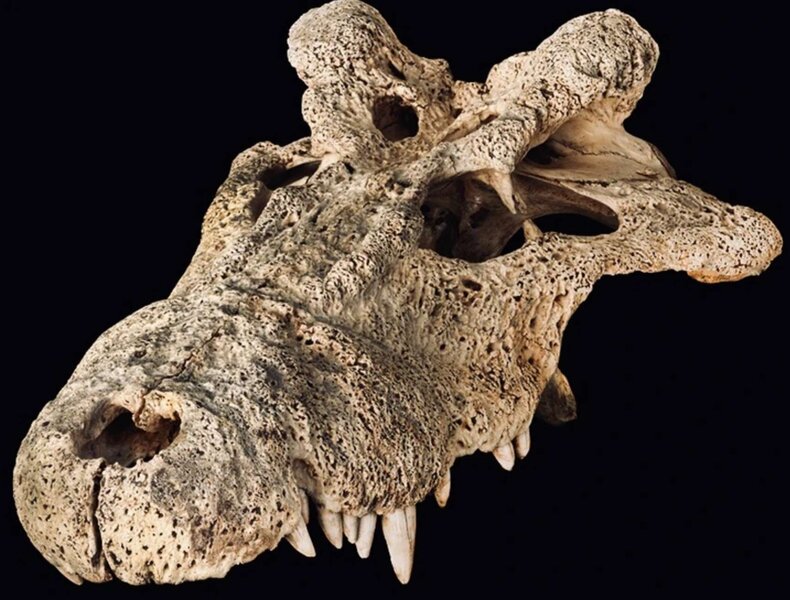Create a free profile to get unlimited access to exclusive videos, sweepstakes, and more!
Extinct horned crocodile from Madagascar finally identified after 150 years

The saga of the extinct horned crocodile carries with it a classification mystery which has finally been solved after 150 years. Everyone needs a place to belong, and such is the controversial case of this odd animal whose bulky skull was first discovered back in 1872.
Based on fossil records, horned crocodiles (Voay robustus) were indigenous to Madagascar going back 9,000 years ago and were still crawling around as early as 1,300 to 1,400 years ago. They were known for their bony-knobbed heads and have existed in modern paleontology limbo after being placed in various croc family lineages and catalogued with many different names.
Now in a new research paper seen in the online journal Communications Biology, scientists heralding from the American Museum of Natural History (AMNH) in New York City employed state-of-the-art DNA testing to analyze these bizarre reptiles and finally come to a consensus on where they should be listed on a proper phylogenetic tree.
"The DNA tells a different story," lead author Evon Hekkala, an AMNH associate at Fordham University in New York, told Live Science. "It tells us over and over again that appearances can be deceiving.
“Madagascar is currently home to Nile crocodiles (Crocodylus niloticus), which are invasive to the island nation,” she added. “The earliest evidence of Nile crocodiles in Madagascar is 300 years old, but Malagasy tales suggest that they may have migrated there much earlier and lived alongside horned crocodiles. We don't have any complete skeletons, but they weren't spectacularly long. Based on the size of their skulls, they were likely similar in overall size to Nile crocodiles."
According to the paper, horned crocs might have become extinct following the arrival on Madagascar of the uninvited Nile crocodiles, severe climate change, or perhaps even the appearance of the first humans some 2,500 years ago.
"Some recent studies have indicated that parts of the island became drier," Hekkala said. "It could be that this benefited the newly arrived Nile crocodile and made the island more inhospitable to the endemic horned crocodile."
With a dearth of horned crocodile fossil records, the number of variations in crocodile species’ skulls, and a scattered ecological history of Madagascar, it’s not difficult to ascertain why it’s taken 150 years to place the creatures in their own evolutionary spot.
"Crocodile head shape varies dramatically with age, sex and even diet," Hekkala noted. "So a large, old crocodile skull might look really distinct."
Scientists first classified horned crocs as true crocodiles, which is a subfamily containing Nile crocodiles and other modern-day crocodiles like the American crocodile (Crocodylus acutus) and saltwater crocodile (Crocodylus porosus). This interesting reptile was now provided with the official name of Crocodylus robustus.
“This confusion was magnified in 1910 when a popular illustration of what a horned crocodile may have looked like was released in a scientific article,” Hekkala said. “Unfortunately, the image actually depicted a modern-day Nile crocodile, but it helped to solidify the theory that the horned crocodiles were true crocodiles. Some even argued that the horned crocodiles may just have been an ancestor of Nile crocodiles.”
This hypothesis stuck as the agreed upon classification until 2007 when scientist inspected the skulls of horned crocodile fossils to detect obvious physiological differences when compared to Nile crocodiles.
Horned crocodiles were then placed into a new subfamily called dwarf crocodiles, which were smaller crocs with stubby, thick skulls that detoured from the true crocodiles known from millions of years earlier. These special horned crocodiles were also christened with a new genus name, Voay, which translates into "crocodile" in the native Malagasy language.
In Hekkala and her team’s illuminating new study, AMNH researchers studied DNA evidence to label exactly which group the horned crocodiles should be catalogued in.
Their diligence showed them that horned crocodiles weren’t really dwarf crocodiles as the 2007 study indicated, and they did not evolve with true crocodiles like earlier scientific studies believed, so instead the homeless extinct reptiles were given their own specific genus.
"What surprised us at that point was that it was not grouped within the true crocodiles, but adjacent to it," Hekkala explained. "This makes it a bit like a long-lost lineage that was isolated on an island.
"Our data support the hypothesis that the modern crocodiles we see today originated in Africa. Extinct species can act as bridges over knowledge gaps. They help us to time travel and to reconnect evolutionary histories to tell the story of life and extinction on Earth."





























